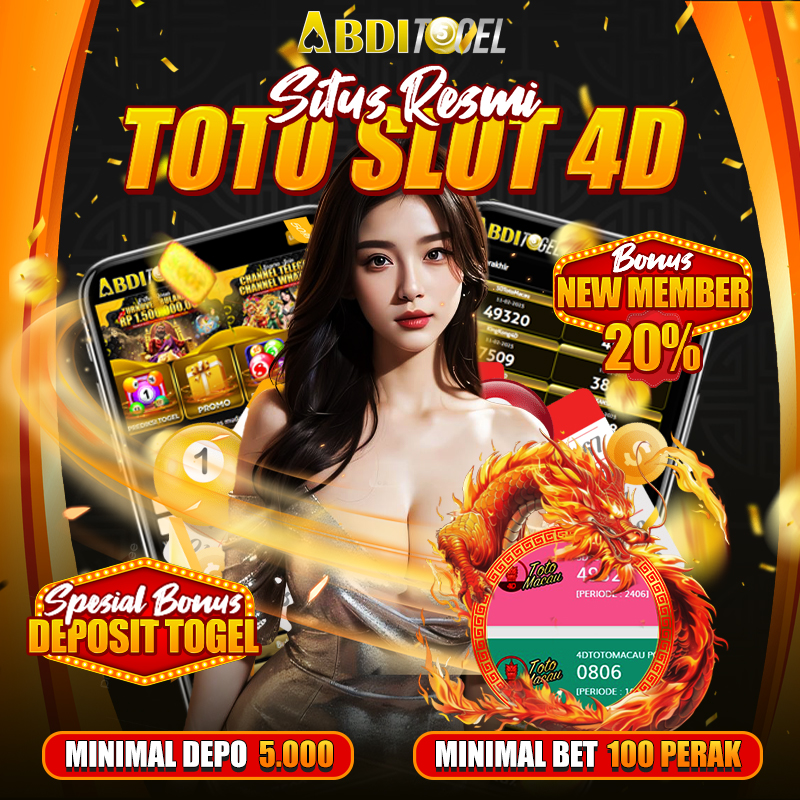Di dunia perjudian online, ABDITOGEL hadir sebagai situs toto macau dan slot 4D terpercaya yang menawarkan pengalaman bermain terbaik bagi para pemain. Sebagai bandar togel online resmi, ABDITOGEL menghadirkan berbagai pasaran togel populer termasuk toto macau, yang sudah dikenal memiliki hadiah besar dan peluang menang tinggi. Selain itu, bagi pecinta slot, platform ini menyediakan slot 4D dengan berbagai pilihan permainan yang menarik, memastikan setiap putaran selalu memberikan sensasi dan peluang jackpot yang menggiurkan. Dengan sistem keamanan terbaik, setiap transaksi di ABDITOGEL dijamin aman dan transparan, memberikan kenyamanan bagi para pemain untuk bermain tanpa rasa khawatir.
Sebagai link toto macau terbaik, ABDITOGEL memastikan setiap pemain mendapatkan layanan premium mulai dari akses yang cepat, layanan pelanggan responsif, hingga metode transaksi yang mudah dan aman. Dengan fitur unggulan seperti live result dan sistem fair play yang terverifikasi, situs ini menjadi pilihan utama bagi para pemain yang mencari pengalaman bermain yang adil dan menguntungkan. Bukan hanya sekadar bermain, tetapi di ABDITOGEL, pemain memiliki peluang nyata untuk membawa pulang kemenangan besar, baik dalam toto macau maupun permainan slot 4D. Ditambah dengan berbagai promo menarik dan bonus melimpah, situs ini semakin mengukuhkan diri sebagai destinasi utama bagi pecinta judi online.
Sebagai bandar togel terpercaya, ABDITOGEL terus berinovasi dengan menyediakan pengalaman bermain yang tidak hanya aman, tetapi juga seru dan mudah diakses kapan saja. Dengan berbagai jenis taruhan yang tersedia, baik di toto macau maupun slot 4D, setiap pemain bisa merasakan sensasi permainan berkualitas tinggi dengan peluang jackpot yang sangat besar. Bergabung dengan ABDITOGEL berarti mendapatkan akses ke dunia permainan yang penuh dengan kesempatan emas. Jika Anda mencari link toto macau yang terpercaya dan situs slot 4D dengan jaminan jackpot setiap hari, ABDITOGEL adalah pilihan terbaik yang bisa Anda andalkan.














 Promosi
Promosi  Login
Login  Daftar
Daftar  Link
Link  Live Chat
Live Chat